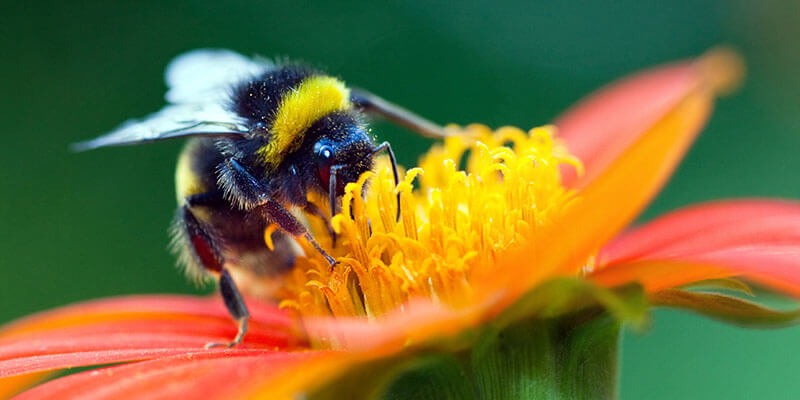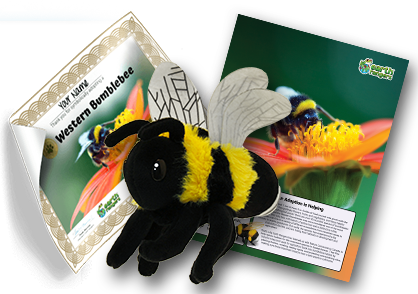Everyone knows that bees are super-important – they pollinate flowers, fruits and vegetables. These helpful insects are anything but pests! Unfortunately, western bumblebee populations are in decline. These fuzzy black-yellow-and-white bees are called “habitat generalists,” which means they’re happy to live in a variety of different ecosystems. Western bumblebees used to be found in habitats across western Canada, from mountain areas to forests to prairie grasslands. These once common insects are losing their habitats to development and agriculture. They’re also being exposed to pesticides. All of these problems spell big trouble for this crucial little bee.

A Busy, Buzzy Life!
A bumblebee’s life starts with the queen of the hive. She’s the only bee to survive the winter (she hibernates through the cold months), and in the spring she has one job: to find the perfect place to lay her eggs and start building a new colony. Popular areas for bee nests are under buildings (like sheds) and in abandoned rodent burrows. The first eggs the queen lays develop into female worker bees. They help by collecting pollen and nectar, and taking care of the larvae and the nest. Later in the season, eggs develop into male bees and new queens. These queens survive the winter, starting the cycle over.

Bee-ing Helpful
We’re working hard to bring the western bumblebee back to southern Saskatchewan by teaming up with Nature Conservancy Canada (NCC). By adopting a western bumblebee, you’ll help NCC purchase land that has been used for farming and transform it back into bumblebee habitats – that means planting native flowers, creating nesting spots and protected areas for overwintering. NCC will also help to educate people in Saskatchewan about how they can help the western bumblebee through their Conservation Volunteer and Indigenous Youth Education Programs.

Proudly supported by:

In collaboration with:



I’m going to plant lots of flowers for all the bees this year!
Bed kind.
bee kind to all kinds of animals!!!
I’m doing a project on bees, they are sooooo cool!
I may adopt the bee soon!
BEE KIND TO BEES!!!!!!!!!!!
I adopted the bee!